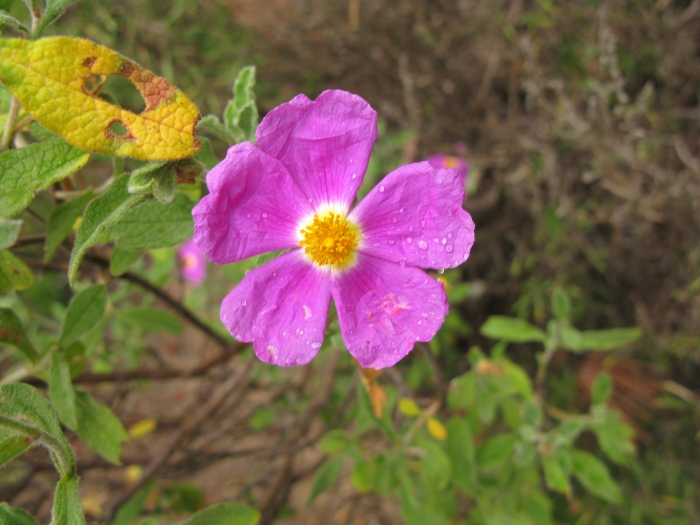Tauric Rockrose
(Cistus tauricus)
Tauric Rockrose (Cistus tauricus)
/
/

andrey_p
CC BY 4.0
Image By:
andrey_p
Recorded By:
Copyright:
CC BY 4.0
Copyright Notice:
Photo by: andrey_p | License Type: CC BY 4.0 | License URL: http://creativecommons.org/licenses/by/4.0/ | Rights Holder: andrey_p | Publisher: iNaturalist | Date Created: 2013-06-15T11:20:19-07:00 |

























Estimated Native Range
Summary
Cistus tauricus, commonly known as Tauric rockrose or Taurus rock rose, is a shrub native to the Mediterranean region, including Southeast Europe and Western Asia. It is typically found in maquis and garigue, which are Mediterranean scrubland habitats characterized by dry, rocky soils and a mix of drought-resistant shrubs and herbs. This plant exhibits a moderate growth rate and reaches a height of 2-3 feet (0.6-0.9 meters) with a similar spread of 3-4 feet (0.9-1.2 meters). The Tauric rockrose has a bushy habit with lance-shaped, sticky leaves and produces large, white, showy flowers with yellow centers that bloom profusely in the spring and continue into the summer.
The Tauric rockrose is valued for its ornamental qualities, particularly its attractive, papery flowers that contrast nicely against its dark green foliage. It is drought-tolerant and low-maintenance, making it suitable for xeriscaping, rock gardens, and coastal planting where it can tolerate salt spray. This plant thrives in full sun and well-drained soils, including clay, loam, or sandy types. It is generally pest and disease-free but can be susceptible to root rot if overwatered or planted in poorly drained soils. While it is not invasive, it can self-seed under optimal conditions.CC BY-SA 4.0
The Tauric rockrose is valued for its ornamental qualities, particularly its attractive, papery flowers that contrast nicely against its dark green foliage. It is drought-tolerant and low-maintenance, making it suitable for xeriscaping, rock gardens, and coastal planting where it can tolerate salt spray. This plant thrives in full sun and well-drained soils, including clay, loam, or sandy types. It is generally pest and disease-free but can be susceptible to root rot if overwatered or planted in poorly drained soils. While it is not invasive, it can self-seed under optimal conditions.CC BY-SA 4.0
Plant Description
- Plant Type: Shrub
- Height: 2-3 feet
- Width: 3-4 feet
- Growth Rate: Moderate
- Flower Color: White
- Flowering Season: Spring, Summer
- Leaf Retention: Evergreen
Growth Requirements
- Sun: Full Sun
- Water: Low
- Drainage: Medium, Fast
Common Uses
Border Plant, Drought Tolerant, Groundcover, Low Maintenance, Rock Garden, Showy Flowers
Natural Habitat
Native to maquis and garigue, Mediterranean scrubland habitats
Other Names
Common Names: Taurus rock rose
Scientific Names: , Cistus tauricus, Cistus creticus subsp. eriocephalus, Cistus creticus var. eriocephalus, Cistus creticus var. tauricus, Cistus eriocephalus, Cistus macrocalyx, Cistus paui, Cistus ponticus, Cistus riphienensis
GBIF Accepted Name: